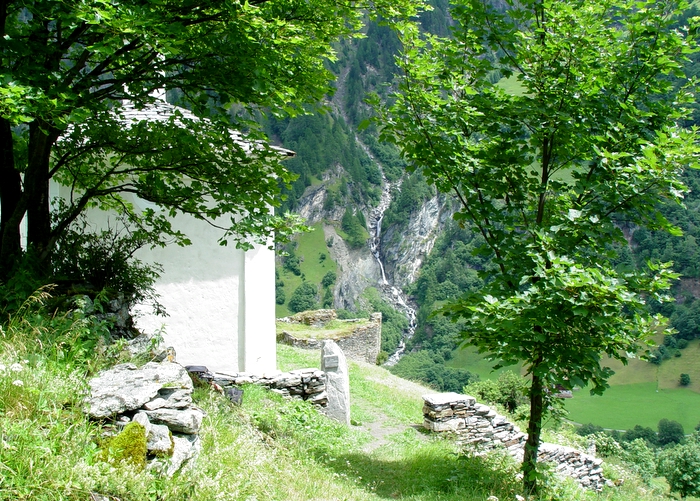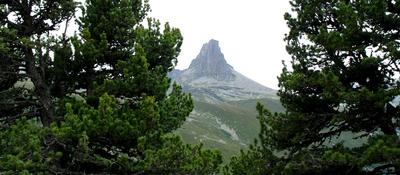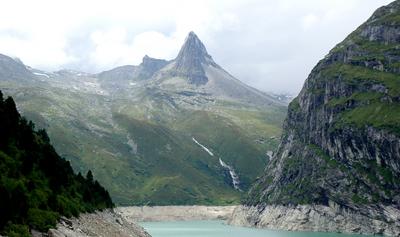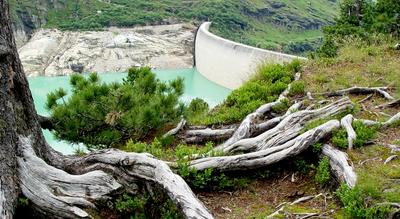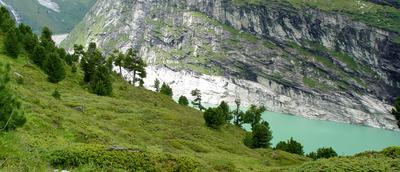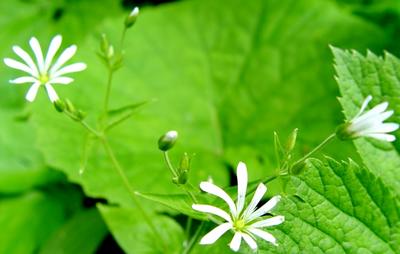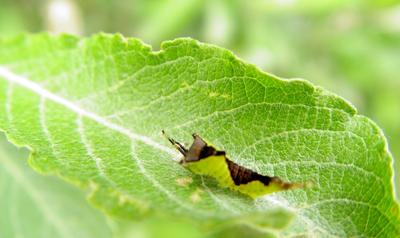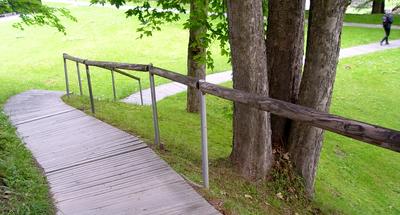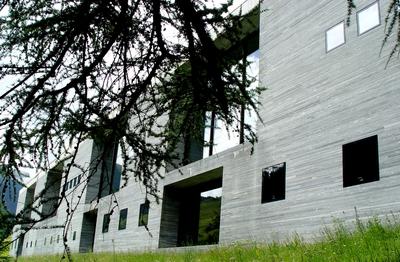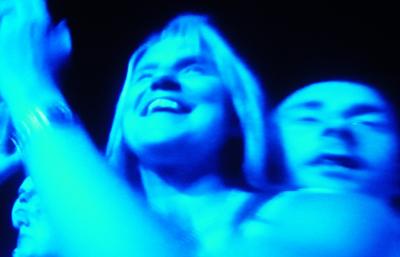Tuesday, November 29, 2005
BUILDING THE GHERKIN
Flew to Zurich yesterday with Geoff Lye for a meeting today with Swiss Re CEO John Coomber and a couple of his colleagues. Flight from Heathrow three hours late, due to need to grit a runway. On the way, read a new report on climate change, Climate Change Futures, by UNDP, the Harvard Medical School and Swiss Re (downloadable from the Swiss Re website). A bit like the Book of Revelations. As we left the Hotel Helmhaus this morning, saw a poster on the facing wall across the street for a movie of the building of Swiss Re’s London HQ, the ‘Gherkin’. And there was Sara Fox, who managed the project and who I interviewed some time back for SustainAbility’s newsletter, Radar (http://www.sustainability.com/network/global-influencer.asp?id=197).
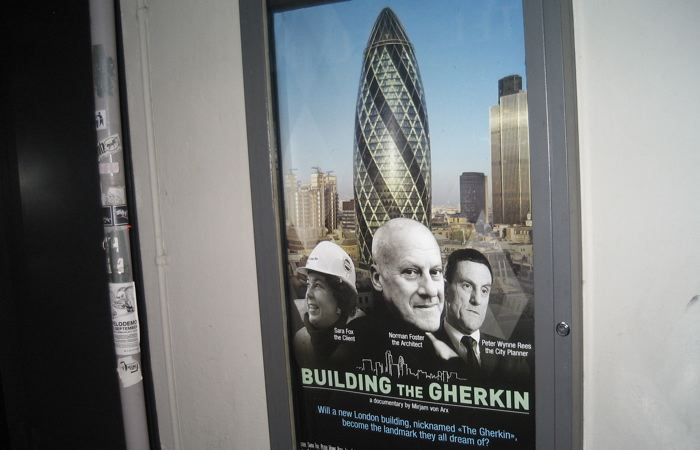
Poster for Building the Gherkin

A Swiss Re perspective
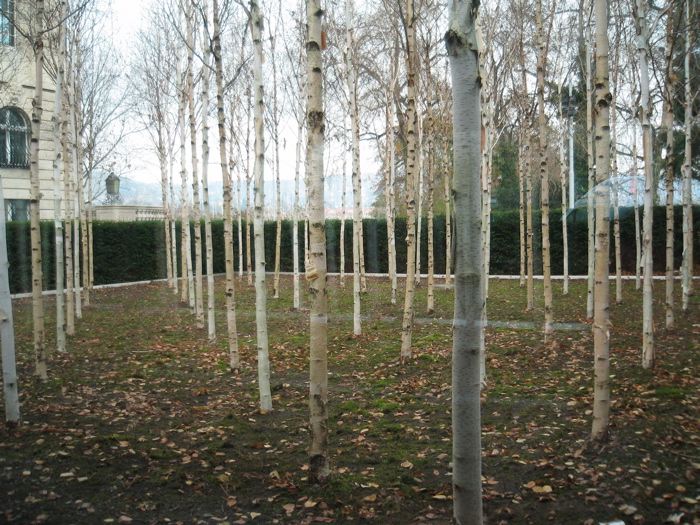
Birchscape
Sunday, November 27, 2005
BOOMERS AND THINGS THAT GO BOOM IN CHINA
The Baby Boomers are getting a fair amount of press at the moment, as they start to head towards retirement. Bryan Appleyard in the Sunday Times today argues that one thing that marks out the Boomers is their unwillingness to accept the processes of ageing and, ultimately, of death. He is writing a book on immortality that argues that Boomers, more than any previous generation, yearn to live forever.
I’m not so sure, particularly having spent several years researching a book on how previous generations thought of the afterlife. The appetite for some form of afterliving has now been a constant of human thinking for tens of thousands of years. Maybe the twin facts that Boomers have led what Appleyard describes as “charmed lives” in an increasingly secular world helps explain why there has been a growing interest in technologies that promise to help people live longer and look better in this world, but there are other ways of looking at all this.
For example, Elaine and I went to a 60th birthday party last night. Inevitably, many of those present were Boomers – and several were current or ex-Greenpeacers, among them Robin Grove-White, Peter Knight, Peter Melchett and Steve Warshal (a long-standing friend who edits Greenpeace Business). So my reaction to the Boomers-deny-death line is that it has been one of the most pronounced characteristics of the Boomers that they have affirmed and embraced life, in all its myriad forms. Environmentalism itself has been pretty much a Boomer phenomenon.
Which makes me wonder whether we will see last week’s events in Harbin, China, helping to spawn new generations of environmentalists in what looks set to be the twenty-first century’s largest economy? A 50-mile slick of toxic chemicals, including benzene, has spread down the Songhua River, forcing the authorities to cut off water supplies to more than three million people.
The scale of the disaster, of the attempted cover-up by Petrochina (a company I met at a dinner while in Beijing in May) and of the resulting media and public fury reminds me of the way in which the post-WWII boom in the USA and Europe resulted in a proliferation of disasters that, quite unintentionally, helped reprogram Boomers. Having talked to such people as Minister Pan Yue of China’s State Environmental Protection Administration, I think it’s very possible that we may see similar trends there. But we can’t count on it. The challenge for all of us, Boomers included, will be to work out how we can influence what happens in China. If we fail to help the Chinese make their forms of capitalism more sustainable, Boomer retirements may be rather less comfortable than many of those now moving into their sixties hope and expect.
And then, just as I was preparing to post this item, an email arrived from a young Chinese student I met in Oslo last week, reminding me that she and I had agreed to meet in London next month. One more indication that if we work this one well, the traffic isn’t going to be all one way. The next generation of Chinese movers and shakers will be reaching out for solutions to the problems their country of 1.3 billion will inevitably face in the coming decades. I see part of my task in the coming years as helping to position SustainAbility – and our wider movements – to rise to the challenge. And the resulting solutions could just help us turn the corner in terms of shoehorning a predicted 9 billion people into a planet whose ecosystems, to put it positively, are already straining at the seams.
AL-JAZEERA
As I flew back and forth to Oslo this week, I read Hugh Miles’ book Al-Jazeera: How Arab TV News Challenged the World (Abacus, 2005). A fascinating story – and particularly useful background given the current controversy about an alleged conversation last year between Bush and Blair about whether Al-Jazeera’s offices should be bombed (a story which features in both today’s Observer and Sunday Times). While it is clear that they are far from even-handed, I have nothing but respect for the physical and political courage of the Al-Jazeera editors and journalists in bringing freer media to the Middle East – and, in these days of active news suppression, the wider world.
One of the most memorable lines comes early on in the book (page 11), when Egyptian President Hosni Mubarak asks to make a surprise visit to Al-Jazeera’s offices during a state visit to Doha. He and his staff are taken aback by the tiny size of the operation. “All this trouble from a matchbox like this?” he asks. On a different scale, we have had similar reactions from people who have visited SustainAbility over the years, particularly – for some reason – Japanese companies.
STAG’S LEAP, GLOBAL WARMING & NOAH’S WINE
Got an email from Tell (Muenzing) as Elaine and I Tubed in towards Marylebone to say his car had broken down and he had had to take a train from Castle Cary – net result being that we would have to go to a Stag’s Leap (http://www.CASK23.com) wine-tasting on our own. Not something we would have chosen to do, but in the event it turned out to be truly fascinating. The Decanter Masterclass was given by Stag’s Leap founder Warren Winiarski and his daughter Julia. The Winiarski family had opened the Stag’s Leap Wine Cellars in 1972 – and shocked the French when, in a blind tasting arranged in 1976 by an English wine merchant in Paris, with tasters who were French wine experts of impeccable credentials, the Stag’s Leap 1973 SLV triumphed over first-growth Chateau Mouton-Rothschild, Chateau Haut Brion and other famous wines.
Warren Winiarski explained how the French concept of terroir works in his part of the Napa Valley, giving us wines that showed the extraordinary influence of his ‘3Gs’ (grape, ground and ‘guys/gals’, the latter his attempt to capture the human part of the wine-making equation). The interplay between the seismic geology of the region and water-driven erosion was demonstrated in wines that were taken from different parts of the resulting alluvial fans across the Stag’s Leap lands, alternately fiery (the ones grown closest in to the eroding hills, where the soil structure was coarsest) and more subtle (where the soils were finest). He also explained how he applied the ‘Golden Rectangle’ approach to winemaking, but the most interesting exchange – for me, at least – came when he was asked a question about the potential impact of global warming in the region.
Long used to the temperature oscillations driven by the current systems off the California coast, he concentrated on them. But then Julia came in and addressed the question directly, perhaps indicating the way in which understanding of the climate change challenge varies across the generations. She noted that rising temperatures are already showing up in terms of “sunburn and shrivel” in the grapes. The result is that picking now often happens with scissors rather than knives, to remove damaged grapes from the bunches. Other strategies involve pruning the vines to form outward branching Vs, to shade the grapes, and picking the grapes at night – to allow them to cool down.
Then, a final, extraordinary flourish, Warren W said he had something special for us, a wine we would be unlikely to taste again. Because the commercial varieties of vine are now genetically impoverished, he has been travelling to places like Kashmir to find the original wild varieties. And he gave us each a tiny little vessel of a wine that he has made from some of these grapes, which he called “archaeological wines”, akin to Noah’s wine, high in both acids and tannins, very much like an alcoholic fruit juice. It was a wonderful opportunity to savour the roots of winemaking – an art which more than most encourages us to understand and appreciate the wonderful interplays of geology, geochemistry, ecology, biology, microbiology and the human intelligence.
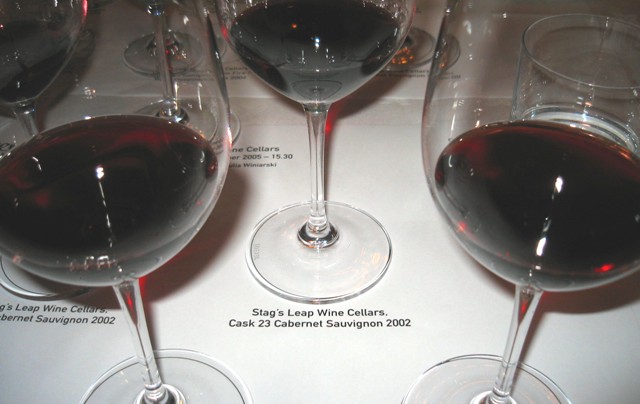
Thursday, November 24, 2005
OSLO
Spent past couple of days in Oslo, mainly at the Norwegian School of Management, after staying last night with Jan-Olaf Willums, a long-standing colleague and friend. This was after an excellent dinner last night with people like Professor Atle Midttun, Jan-Olaf and Jorgen Randers, who I first heard of as one of the co-authors of 1972’s Limits to Growth study.
This was a major conference on corporate social responsibility, which I kicked off alongside Professor Norman Barry of the University of Buckingham. The idea was that I would be pro-CSR, Norman anti. And as we were driven in from the airport it seemed we would find it possible to disagree on just about everything: he didn’t like rock’n’roll, whereas I love it; he loves Broadway musicals, which I don’t. And so on. But then the dykes began to leak as he admitted to an interest in Cream …
In the event, though the School’s new premises are truly spectacular and we got an excellent turn-out, I’m not sure we really engaged the fundamental issues robustly enough in the debate. It’s odd how academic some of these anti-CSR folk are, defaulting to long tracts on the history of company law. All very well, but as the world moves towards a human population of 9 billion and with the climate beginning to wobble, business needs to raise its sights a little. A point that the head honcho from Norwegian insurer Storebrand acknowledged forcefully during the first day of the event.
 Inside the Norwegian School of Management
Inside the Norwegian School of Management
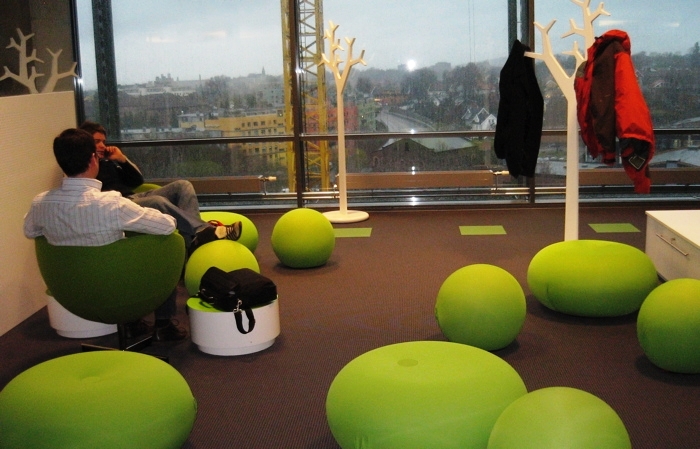
Studying wasn’t like this in my day!
Wednesday, November 23, 2005
THE LANCASTRIA
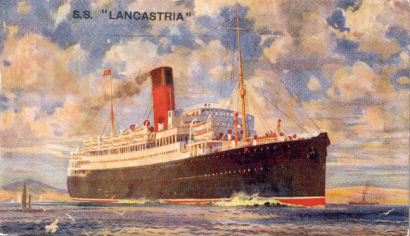
Postcard of HMS Lancastria in happier days
Trawling through e-mail ahead of a flight to Oslo, I came across yet another (this time alleged) cross-link to Flt-Sgt Berry, who saved my father’s life during the Battle of Britain (see 29 October and 14 September entries). A Frenchman e-mailed to say that he was researching a book on the 1940 sinking of The Lancastria off St Nazaire, the worst maritime disaster to affect Britain, with many thousands of British soldiers and sailors drowned. He also said that he thought that Berry had shot down the plane that bombed and sank The Lancastria (http://www.lancastria-association.org.uk/). A few moments of Googling, however, turned up the assertion (courtesy of the BBC, http://www.bbc.co.uk/dna/ww2/A4103056) that the German aircraft that put a bomb down the ship’s funnel was a Ju88, not a Heinkel 111 – the type of aircraft Berry was credited as shooting down over St Nazaire. But, apparently, Berry’s citation for the DFM mentioned that he had knocked down the Heinkel that had sunk The Lancastria. In any event, Tim – my father – is on the case.
But whatever the facts of this particular matter, I am continuously amazed at the extraordinary power of search engines in general – and of Google in particular. The power to surface accurate facts and inaccurate. Recently hugely enjoyed John Battelle’s amazing book The Search: How Google and Its Rivals Rewrote the Rules of Business and Transformed Our Culture, one of the best business books I have read in a long time.
Sunday, November 20, 2005
RICHMOND PARK
Day of reading and writing. Wonderful midday walk with Elaine around Richmond Park, with fog still hanging over landscape, though by the time we got back most of it had burned away. The Canon IXUSi comes in handy again:
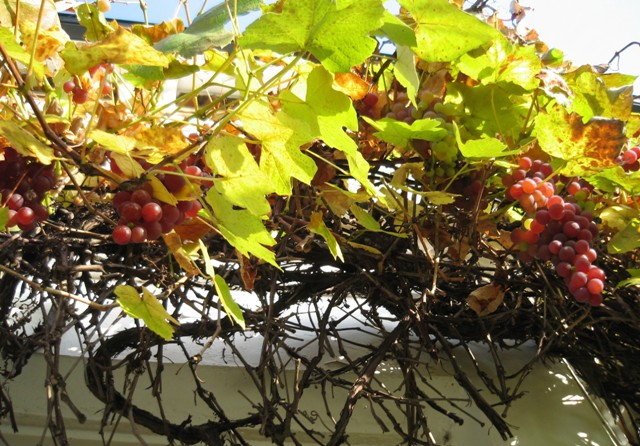
Strawberry grapes over our front door
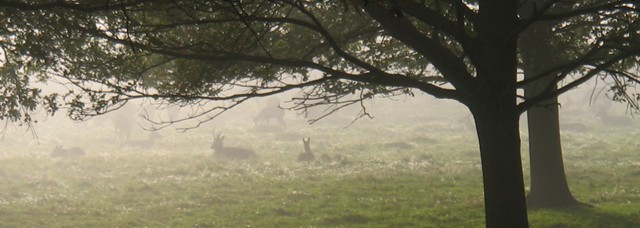
Deer in the mist
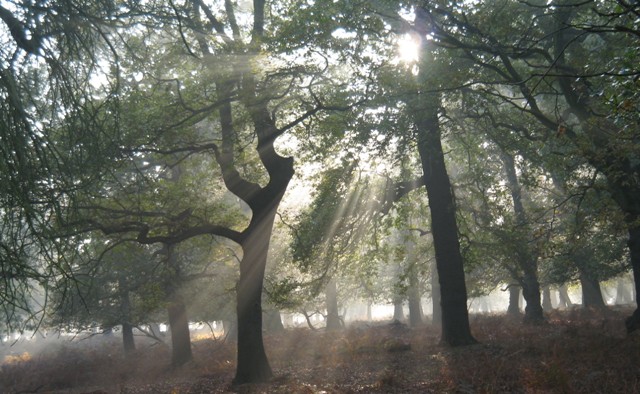
Winter sun
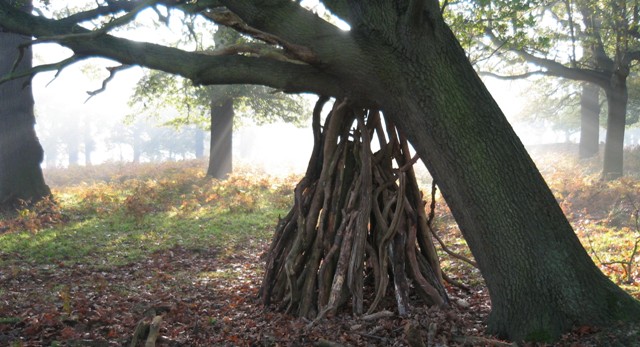
Tree taking a rest
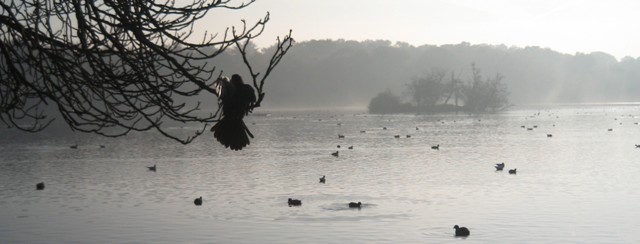
Pond 1

Pond 2
Saturday, November 19, 2005
THE ART OF COARSE WHALING
Various newspapers are bombarding us these days with free film DVDs. Last night I watched the Ray Bradbury/John Houston version of Moby Dick, which I can’t remember seeing before. Elaine’s sister Christine was here with her husband, Michael Green, author among other things of a series of books like The Art of Coarse Acting, The Art of Coarse Sport, The Art of Coarse Sailing, and so on. Turned out that many years ago he had also done a coarse acting version of Moby Dick for the Edinburgh Festival, although as we watched it sometimes seemed that the film scarcely needed lampooning. But it was extraordinary for its time. And fascinating to see so many elements of the 1956 film that would be echoed – intentionally or not – in future films, for example the whale-circling seagulls in Hitchcock’s The Birds (1963) and the marine monster modelling in Spielberg’s Jaws (1975). The whaling scenes that involved real whales reminded me, though, of the role whaling played in triggering early environmentalism, my own included.
Friday, November 18, 2005
CENTRE FOR INTEGRAL ECONOMICS
Lively day, including lunch with John Manoochehri. Wrote several articles, one for a South African publication, Opportunity. Facinating session in the afternoon with Donna Morton of Canada’s Centre for Integral Economics. The Centre was originally launched in 1998 under the name NEW BC, initially as an affiliate of the Seattle-based Northwest Environment Watch (NEW). Those involved recognised the power and potential of economic instruments (like London’s congestion charge) to transform society. CIE projects range from airshed management through municipal ‘tax shifting’ to the future of grizzly bears in British Columbia. I emerged even more persuaded that this is an area where we need to invest a good deal more effort.
Thursday, November 17, 2005
MISSION, VISION AND VALUES
Day begins with an extremely productive session with Sophia (Tickell) and Yasmin (Crowther) on the revamping of SustainAbility’s Mission, Vision & Values. At one point, President Lincoln’s Gettysburg Address comes to my mind and, when Sam prints it off, it turns out to be a wonderful, emotionally charged stimulus for the task in hand. Other meetings during the day include one with Verity Haines of the Royal Society of Arts, on possible themes that the RSA could address in future, and another with Laurence Shorter, who is researching a very interesting book on the nature of optimism. Have always said I’m an optimist, though my (I think realistic, if painful) vision of where we are headed strikes many as profoundly pessimistic. For me, the optimism is in believing we can make headway despite the extraordinary scale of the challenges that face us.
On the way in – and yesterday – have been playing with an IXUSi camera that Canon very kindly gave me when we were with them in Tokyo. Fits into the palm of the hand, yet rates 5 megapixels. The photos below were mainly taken from the bike as I cycled in this morning:

Fence in Holland Park

Albert from behind
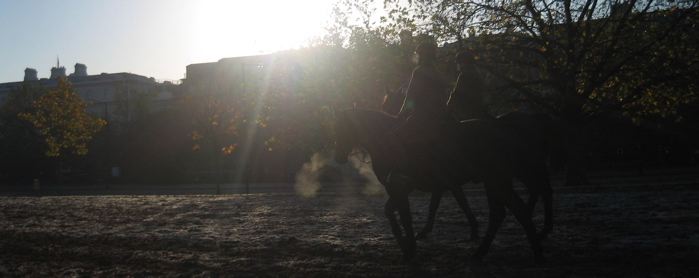
Horses along Rotten Row – more or less opposite our old offices
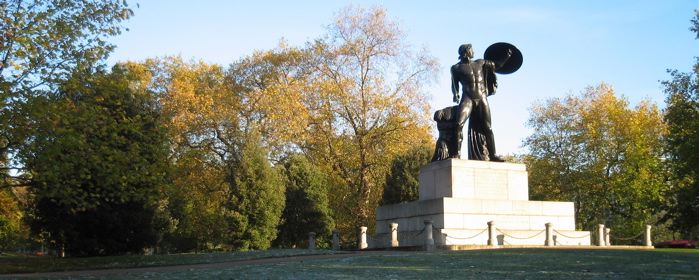
Achilles
Wednesday, November 16, 2005
ECGD
Back from Geneva in time for a lunch with Lucy Siegle, who writes a column on ethical consumption for The Observer. The range of ethical and green consumer choices is expanding, but it’s amazing/worrying how often the same few products surface in discussion. Much work to do. Then on to ECGD, trundling my case on wheels through Docklands, after which I meet up with Elaine for Shell CEO Jeroen van der Veer’s pre-Christmas party at Shell Centre. Then home.
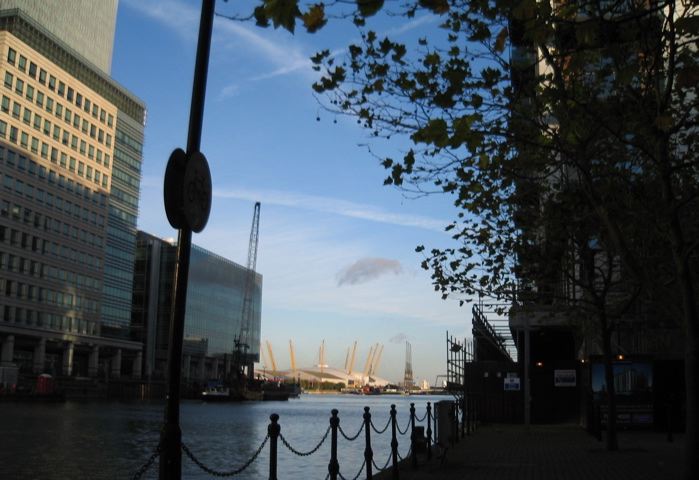
Millennium Dome
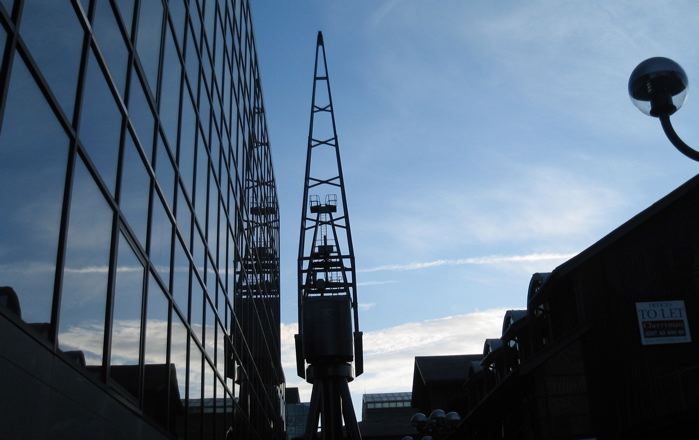
Crane
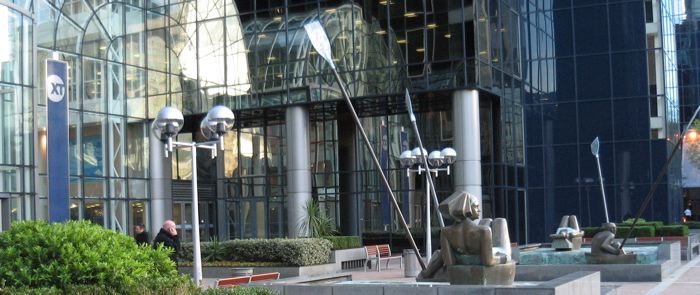
Entry to ECGD building
Tuesday, November 15, 2005
CHINA EUROPE BUSINESS SUMMIT
Whatever else it has been, 2005 has been the Year of China. The giant country has loomed every larger on our radar screen as the year wound by, not least because of my first visit to the country in May[1]. In addition to speaking at the Fortune 500 Global Forum in Beijing, I had wonderful opportunities to meet people from the Chinese government, business and NGO sectors courtesy of people like CGA, the China Business Council on Sustainable Development, Shell and WWF. Then, yesterday and today, I have taken part in the first China Europe Business Summit, held in Geneva by Horasis (The Global Visions Community[2]), which helped me to pull many of the loose threads together—although not all the conclusions were comfortable ones.
The China Europe event—now set to become an annual series—is the brain-child of Dr Frank-Jürgen Richter, who I had first met when he was the World Economic Forum’s Director of Asian Affairs. Now President of Horasis, he had asked me to chair a session on ‘The Chinese Approach to Corporate Citizenship’, which sounded intriguing. In welcoming delegates to Geneva, he stressed that “China’s rise to global eminence is providing formidable opportunities for European firms.” True, but the event also underscored the uncomfortable fact that European—and North American—firms are facing increasingly formidable competitive challenges from the same direction.
In the wake of CNOOC’s recent attempt to take over the US oil company Unocal[3], one panellist wondered aloud how long it would be before a Chinese company had a go at taking over Wal-Mart? Tongue-in-cheek, perhaps, but today’s lightly dismissed improbabilities have an uncomfortable way of becoming tomorrow’s probabilities and realities. And the same, inevitably, is going to be true for the Chinese. Issues that would have once have seemed impossibly remote to them, alien even, are now racing up the business agenda for Chinese companies with international aspirations.
CNOOC President Fu Chengyu was one of the top Chinese business leaders who made frequent reference to issues like climate change during the Geneva meeting. But perhaps the most interesting voice for the future of Chinese capitalism was the extraordinary Zhang Yue, who Forbes magazine listed—with his brother—as No. 25 in its 2001 survey of China’s 100 Richest Business People. Given that he was once a public school teacher, Zhang’s rise to success is even more striking. In 1988, he founded Broad Air Conditioning, where he is now CEO, and which has boasted an 80% share of the energy-efficient air-conditioning market in China. His personal quest, he says, is “to make society a better place to live.”
Zhang was also one of the panellists in the session I chaired. And while several speakers—including Serge Berthier who founded the quarterly Asian Affairs[4] and chairs Oriental International Strategies and the Asia-Europe-Forum—questioned whether China could afford to adopt foreign standards of corporate citizenship any time soon, Zhang repeatedly stressed the stunning nature and scale of the environmental challenges his country faces. Like a number of the companies represented at the Geneva summit, he noted that Broad Air Conditioning’s ambition is to go global. In the process, he noted, the aim will not be to become a “big company, but a great one.” And for that to be sustainable, the international corporate citizenship agenda will become increasingly important.
Several other speakers discussed the rising expectations and standards that all high-brand businesses are now expected to meet. Perhaps most strikingly, we had Eva Biaudet, a member of Finland’s Parliament and a former Minister of Health and Social Services. Modestly introducing herself as “a typical Nordic woman politician”, with an interest in such areas as human rights and climate change, she accepted that it might seem strange that a country of 5 million could have something to offer to a country of 1.3 billion. But she noted that Finnish companies are increasingly active in China, with over 200 firms now employing some 24,000 local Chinese.
That was the positive side. More challengingly, she explained how she is teaching her children to choose between products offered by different companies on the basis of their environmental performance—and, she warned, the behaviour of such companies will increasingly be vetted by western consumers for their performance in relation to such issues as environment, working conditions and human rights.
In headlines, we discussed three main areas of the citizenship agenda: international companies moving into and operating in China; national Chinese countries operating in the domestic market; and, the big long term trend, the growing number of Chinese companies operating abroad.
From the presentations of people like Nick Butler, BP’s Group Vice President for Strategy & Policy Development, it was clear that the best of overseas investors in China are doing their best to ensure that their operations in the country are state-of-the-art. But several speakers underscored the political challenges that will surface as China moves onto the international stage.
Tom Spencer, Executive Director of the European Centre for Public Affairs at Surrey University, and a former Member of the European Parliament, recalled this year’s ‘Bra War’. This resulted in over 80 million items of clothing – including sweaters, trousers and bras – piling up in warehouses at European ports. Spencer accepted that Zhang Yue was highly unlikely to face a consumer boycott against air-conditioners any time soon, but continued to say that the range of contentious issues is growing rapidly. Among others, he spotlighted the continuing problems international companies trading into China face in terms of intellectual property and counterfeiting. In fact this issue surfaced repeatedly through the summit, with some participants arguing that this has been one of the features of Chinese business practice (or, more accurately, malpractice) that has been preventing more EU companies from getting involved.
Interestingly, Spencer also raised the distinct possibility that the early twenty-first century vision—in the West, at least—of ‘turbo-capitalism’ evolving along Anglo-Saxon lines will prove illusory. Instead, our session concluded, the future is likely to be one of multi-polar politics and multiple capitalisms, with huge implications for the types of ‘corporate citizenship’ that will take root (or fail to do so) in the various world regions.
Our last speaker—but one of the most interesting—was Zhao Min, the Harvard-trained President of Sinotrust Management Consulting. When he and two colleagues resigned from China’s former Ministry of Foreign Trade and Economic Cooperation in 1992, Zhao scarcely dared tell his parents that he was venturing into the private sector—and met with sarcastic comments when he went to register the new company with the Beijing Industry and Commerce Bureau. Now Sinotrust employs over 600 people at its offices in Beijing, Shanghai, Guangzhou and Hong Kong.
Zhao joked that in the old order, the smartest Chinese became government officials, the next level down went into education, and (by implication) the bottom of the barrel went into business. Although he commented that there are very few companies anything like Broad Air Conditioning, he reported that business is becoming increasingly popular as a career path for bright Chinese youngsters—and, in a parallel trend, many business leaders are beginning to acknowledge the need not just to pursue raw profitability but also to manage against a “balanced scoreboard”.
The relatively low turn-out for our corporate citizenship session—which faced competition from parallel events on such themes as intellectual property, intangibles, corporate governance and innovation—led some of us to conclude that the title should have been more along the lines of ‘How To Make Billions From Corporate Citizenship’. But it will be fascinating to track the evolution of the emerging Chinese scoreboards as Frank-Jürgen Richter and his colleagues continue to build their series of summits.
[1] See blog entries for 17-23 May at http://johnelkington.com/weblog/2005_05_01_arc.htm
[2] http://www.horasis.org
[3] CNOOC is the China National Offshore Oil Company (http://www.cnoocltd.com)
[4] http://www.asian-affairs.com
Monday, November 14, 2005
FRANCISCO ANSELMO DE BARROS
Arrived earlier this evening in Geneva, for an EU-China conference. In trawling through e-mail after the reception, I came across an exchange among a group I’m working with on an environmental status report for the World Economic Forum. The report will be fairly gloomy, but even gloomier is the news from Brazil, where on Saturday a leading Brazilian environmental activist, Francisco Anselmo de Barros, is reported to have doused himself with gasoline and did what Vietnamese priests used to do at the height of that conflict. Badly burned, he died a day later.
Apparently, he had lost hope in his 20 year battle to protect the Pantanal ecosystem from the impacts of sugar cane farming, taking his life in a desperate attempt to stall the plans of the Governor of Mato Grosso do Sul to allow the construction of 23 sugar/alcohol plants in the Pantanal region. Having just co-written a piece for Grist arguing that those of us who engage business need to remember the activists who have created our agenda, with the focus of the article on the late, great Rosa Parks, this tragedy underscores the point even more energetically. The Grist piece is due to post tomorrow.
Friday, November 11, 2005
GLOBESCAN, LEAD & FORUM FOR THE FUTURE
A day spent skimming around London, first with Sam to High Street Kensington for a meeting with Doug Miller of GlobeScan (www.globescan.com) and Dr Simon Lyster of LEAD International (www.lead.org), to discuss possible joint venture. Then back to Bleeding Heart Yard for lunch with Peter Madden, the new CEO of Forum for the Future (www.forumforthefuture.org.uk). Interesting that so many of us now sense impending change in our field – and are aiming to drive our organisations in new directions. Easy to feel competitive, but there will also be a growing need for different players to come together to achieve scale.
Thursday, November 10, 2005
CAPITALISM AS IF
Walk across to the London Review of Books Bookshop in Bury Place for the launch of Jonathon Porritt’s new book, Capitalism as if the World Mattered. Published by Earthscan (www.earthscan.co.uk). Wonderful gathering of the tribes, but then had to race back to Barnes for a late teleconference with a US publisher.
SHELL FOUNDATION
Walked both ways from Holborn to Waterloo, partly to clear my head. Bumped into various people – including John Sauven of Greenpeace – returning from the South Bank celebration of Ken Saro-Wiwa’s life as I walked across Hungerford Bridge to a lunch at the Shell Centre to celebrate the first five years of the Shell Foundation (www.shellfoundation.org). As Shell CEO Jeroen van der Veer noted, the Foundation team under Kurt Hoffman have made a good deal of progress. I particularly like the work they are doing to tackle the indoor air pollution problem in developing countries, caused by cooking and open-fire heating, and currently having a particularly devastating impact on the health of women and children (http://www.shellfoundation.org/index.php?menuID=3&smenuID=10&bmenuID=7).
One of the people who spoke at the Foundation was Nancy Kete, who runs the extraordinary WRI EMBARQ program (www.embarq.wri.org). And she was remarkably candid about the political problems faced in major world cities as the EMBARQ team try to co-develop more sustainable mobility systems. But they are making progress. One statistic that struck me was that a fast-transit corridor in Mexico City they have helped develop now handles 250,000 people a day and saves them an average of something like an hour a day, either way.
A key strength of the Foundation’s work is its focus on leverage and scale. Sir John Houghton, one of the Foundation’s trustees but perhaps best known for his work on climate change, noted that it used to be said that rather than give a poor man a fish you should give him a fishing-rod and teach him to fish. Today, he suggested, the challenge is to build a fishing-rod factory – or even a chain of fishing-rod factories. A great way of putting it, as long as someone keeps an eye on the long-term health of the fisheries.
REMEMBERING KEN SARO-WIWA
Today is the tenth anniversary of the executions of Ken Saro-Wiwa and eight other Ogoni. Puts me in mind of the not-yet-published column I have just co-authored for Grist on the absolute need for all of us interacting with business to continuously assess our progress (or lack of it) in the light of the values and priorities of earlier generations of activists. In this case, we were talking about the late, great Rosa Parks, sometimes described as the “mother of the civil rights movement.” But Ken Saro-Wiwa’s agenda and legacy must also be a key benchmark for anyone professing to be a change agent in such areas as human rights, national and global governance, and sustainable development.
Sunday, November 06, 2005
ZHENG HE AND PAN YUE
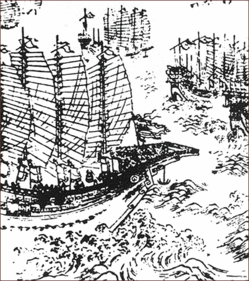
Woodcut of Zhang He’s voyaging (from Wikipedia)
Back late – thanks to almost medieval levels of service on First Rail – from a lunch in Oxford with Vice Minister Pan Yue of China’s State Environmental Protection Administration and Zhang Xuejun, Deputy Director-General of the International Cooperation Center at the National Development and Reform Commission. Geoff (Lye) also took part and the conversation was a wonderful continuation of our conversation earlier in the year (see 19 May entry).
Minister Pan gave Geoff and I collection of Chinese stamps commemorating the 600th anniversary of the ‘Voyages to the Western Seas’ made by the ‘treasure ship’ fleets of eunuch admiral Zheng He (AD1371-1433). A Chinese Columbus, but on a much larger scale, Zheng He set sail at least seven times, but the voyages eventually petered out because of the lack of any underlying economic purpose (other than tribute-gathering) and attacks from northern tribes, which distracted the Emperor. I said that I seemed to recall that the admiral’s ships were burned after the last voyage, and Pan Yue said that many of his maps were destroyed too.
For each step forward …
Saturday, November 05, 2005
DRAGONFLY IN DISTRESS
On Thursday morning, ahead of taxiing out to Narita airport, Judy, Tomoo and I walked around the park in front of the Imperial Hotel. Odd how the robotic, bird-like call of the traffic lights – presumably to help blind people – are echoed by the crows in the park. As we walked by a pond, I saw a dragonfly (wish I could say damselfly) in distress and, stepping over the don’t-step-here ropes, I cantilevered out over the water to rescue it. As I scooped it up on a long stick, a mound of water built up ahead of a Jaws-like carp that obviously saw the insect (much admired in Japan) as lunch. Later, we strolled by a wedding and around a flower show, featuring chrysanthemums, bonsai trees and other plants that had been induced to mimic everything from jellyfish through maiden aunt hair-do’s to exploding neutron stars.
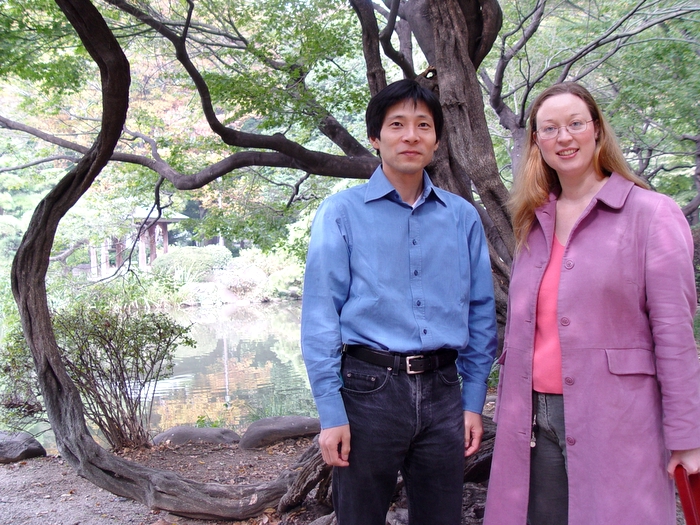 Tomoo, Judy and pond with Speilberg-worthy fish
Tomoo, Judy and pond with Speilberg-worthy fish
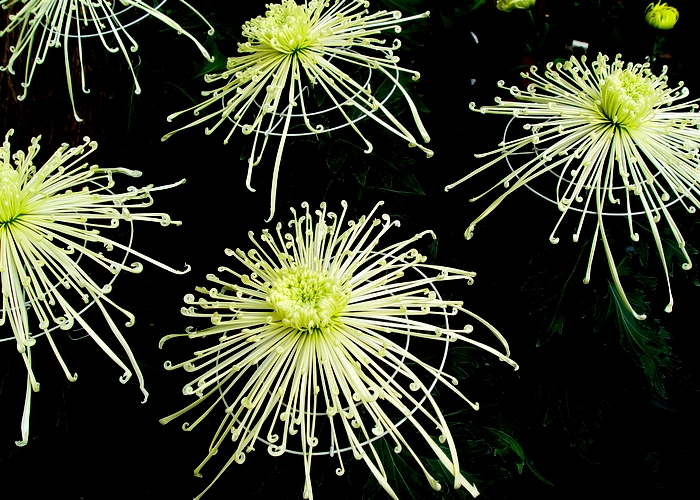
Neutron flowers
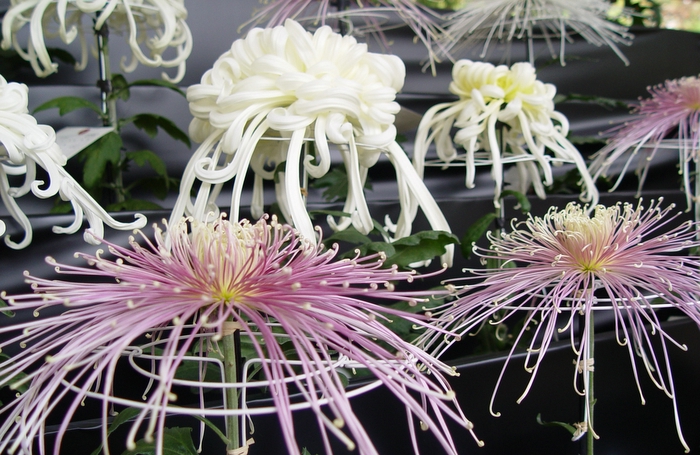
Maiden aunt hair-do flowers – or Portuguese flowers of war
TOYO KEIZAI IS 110
On Wednesday, we started the day with a session on corporate social responsibility at Nippon Keidranren, the Japanese Business Federation. Interesting discussion with Hiroshi Hirose, a Managing Executive Officer at Sumitomo Chemical and Chairman of the Keidanren Committee on Socially Responsible Management, on Sumitomo’s efforts to produce millions of insecticide-impregnated mosquito nets for the developing world (http://www.sumitomo-chem.co.jp/english/society/).
Then, in the afternoon, I did a keynote for the conference celebrating the 110th anniversary of Toyo Keizai (www.toyokeizai.co.jp) They are the country’s leading business publishing group, rather like our Economist group. One reason I know them is that they launched a Green Reporting Award in 1998 and then – in 2004 – a Sustainability Reporting Award.
The event was kicked off by Toyo Keizai President Hiroshi Takahashi, who was followed by Morio Ikeda, Chairman of Shiseido. When I began, I said that I didn’t know what it was like to be 110, since – at 56 – I was only half way there. Optimistic, given that when I returned home I found Elaine had cut out an obituary for someone I knew quite well over the years, Robert Lamb, who had died of a heart attack at 56 (http://www.guardian.co.uk/obituaries/story/0,3604,1591737,00.html).
In any event, I said that if the amount of energy, imagination and professionalism that Toyo Keizai had shown in developing the conference were any guide to what it would be like to be 110, then I was happy to think I might still be alive in 2059. But then I noted that by 2050 the world’s population is expected to have reached 9 billion, Japan’s population is predicted to have fallen fairly dramatically, many of the fisheries on which the country’s diet depends will have collapsed, and climate change will really have got its claws into our global economy. After that I cheered up a bit and went onto a more positive footing!
The second phase of the conference was a panel discusion, with Professor Katsuhiko Kokubu of Kobe University’s Graduate School of Business Administration facilitating. We had presentations from people like Masamitsu Sakurai (Ricoh’s Chairman, President and CEO) and Yoshiya Hara (Chairman, Daiwa Securities). Then I summed up. Overall, it’s extraordinary to see how the corporate social responsibility agenda has pushed into the mainstream here.
In the evening, Judy, Tomoo and I joined Peter David Pedersen of E-Square and Takako Okamura (not the singer of the same name) for dinner at a wonderful restaurant on a hill overlooking Tokyo. She is an extraordinary young woman: used to be a newscaster, then lived with hippies in Australia and discovered alternative, low-impact lifestyles. She returned to Japan and founded the ‘Organic Concierges Association’, to train people to help citizens make the transition of an organic, more sustainable lifestyle.
Friday, November 04, 2005
CANON & THE SPIRIT OF KYOSEI
Flew to Tokyo late on Sunday, arriving late Monday. Stayed in the Imperial Hotel with Judy (Kuszewksi) and Tomoo (Machiba). Slightly disappointed to find the – admittedly luxurious – Imperial is not the one designed by Frank Lloyd Wright and opened in 1923, but a successor opened in 1970 – after the original building had been reduced to a shadow of its former self by floods, earthquakes, wartime bombing and air pollution. We did, though, manage to find the bar inside the hotel where elements of the old hotel are preserved.
Much of Tuesday spent with Canon, where among others we had a session with Yusuke Emura, Managing Director of Canon’s ‘Global Environment Promotion Heaquarters’. The company pursues what it dubs kyosei, which translates as “the spirit of cooperation”. Canon’s honorary Chairman, Ryuzaburo Kaku, wrote a piece for the Harvard Business Review in 1997 (July-August), in which he tracked the roots of the concept back to the period between 1500 and 1640, when Japanese traders were among the most successful in the world. At the time, however, “cultural differences led to considerable conflict. (Some things have not changed.)”
In response, a successful Japanese trader teamed up with a famous Confucian scholar to develop a set of guidelines known as Shuchu kiyaku. The central gist, “that trade must be carried out not just for one’s own benefit but also for the benefit of others. The regulations also stated that despite differences in skin color and culture, trading partners should be considered equals.”
Japan’s subsequent history included the shogunate, when the country entered a period of self-imposed isolation, and its subsequent, ulitmately disastrous period of militarism, which ended with the nuclear attacks of 1945. And it was while trying to evolve a philosophy which presented Japan as part of a wider world that Kaku-san came across the Shuchu kiyaku – and made its principles central of his corporate philosophy of kyosei.
After our meetings, we wandered around the Canon Gallery, which as a long-time photography addict I found fascinating. You could see the long march – or evolutionary ascent – of camera and lens technology, with many early designs closely modeled on Leica’s look and feel. Given that one of my earliest cameras was a Leica M3, I recognised that in a flash. But one of the most interesting exhibits, at least for me, was a cabinet showing some of the hundreds – perhaps even thousands – of components from Canon photocopiers, printers and other products that have been forced into exinction by legislation (particularly in markets like the EU and US) banning the use of such substances as cadmium. It was like looking down at the truncated branches of a fiercely pruned tree of technological life forms.
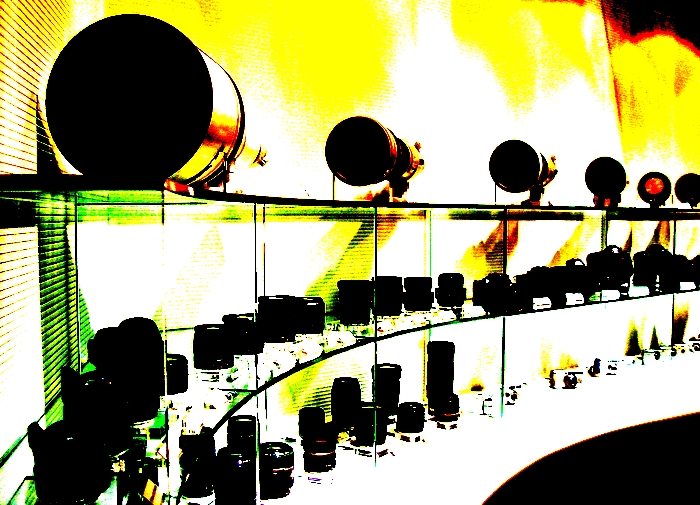
Ascent of the paparazzi
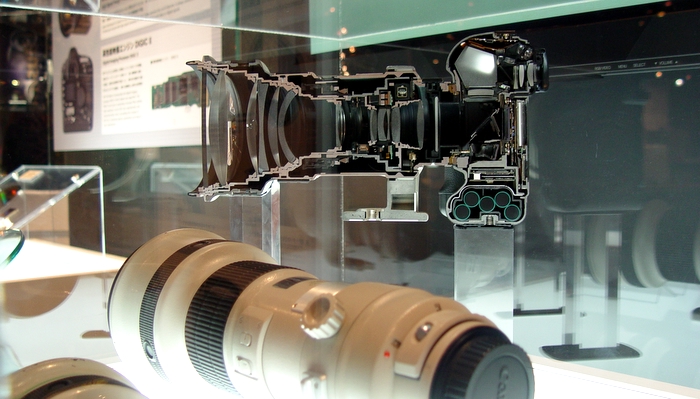
Cutaway
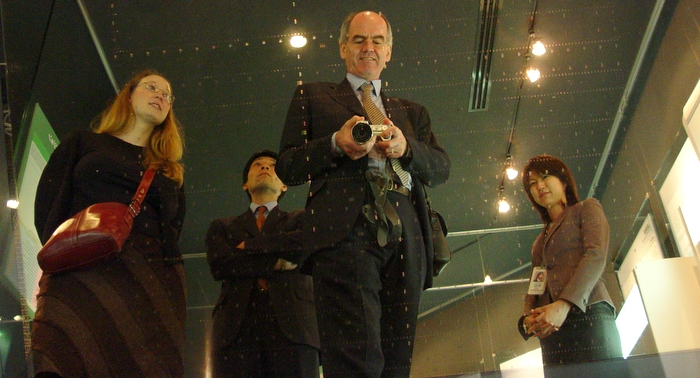
Mirror, mirror
 Canon’s cabinet of extinctions
Canon’s cabinet of extinctions

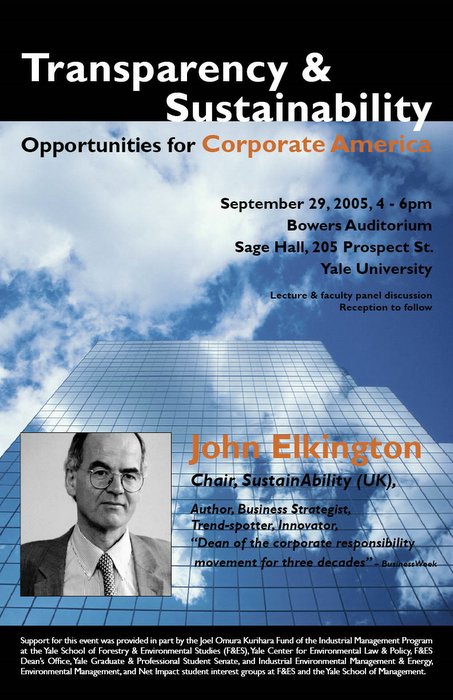
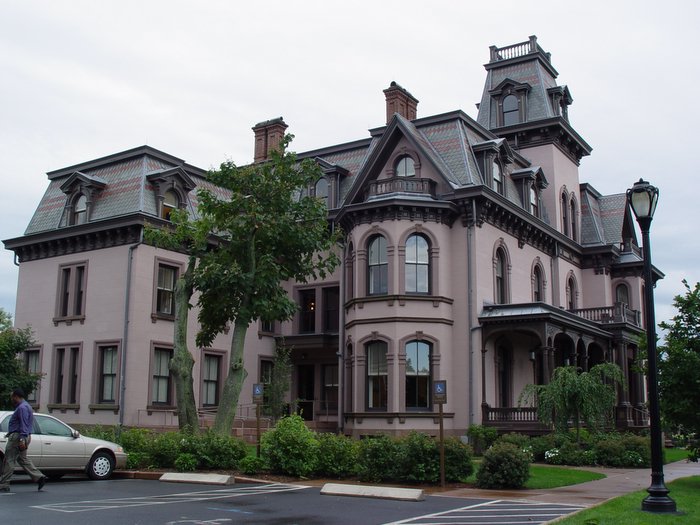
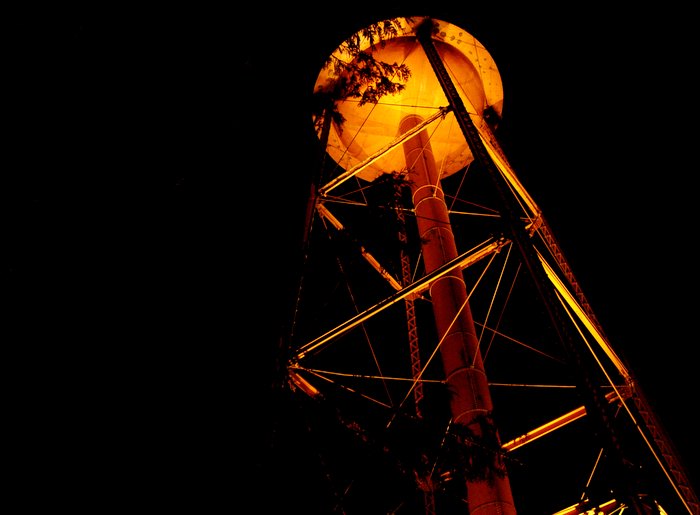
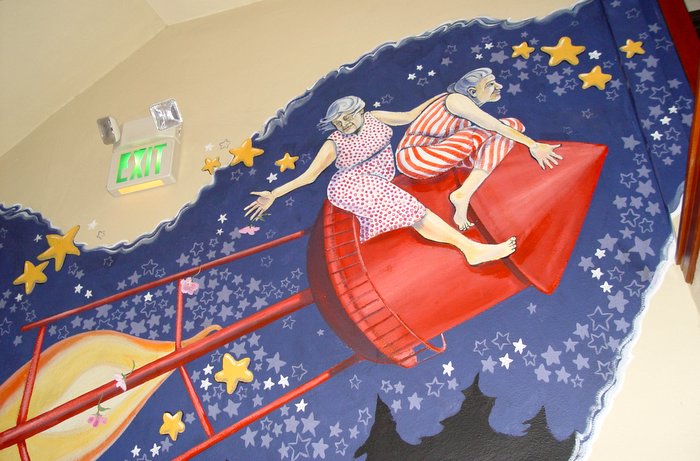
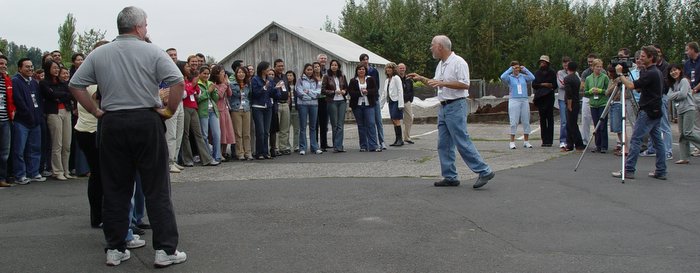
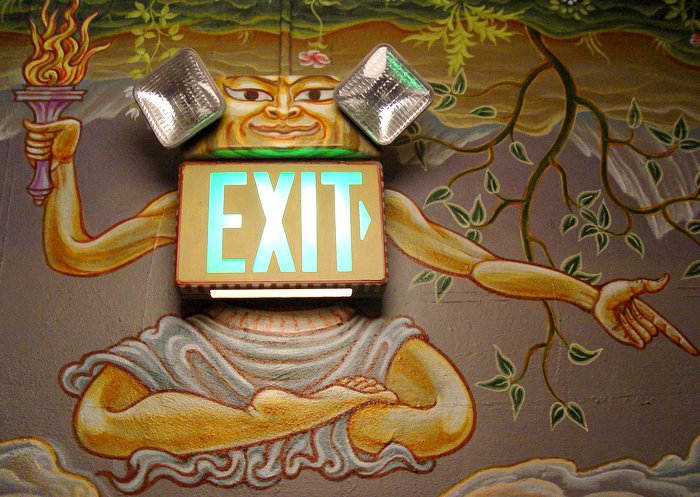


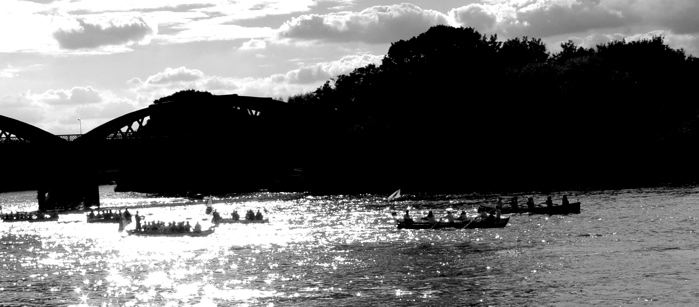
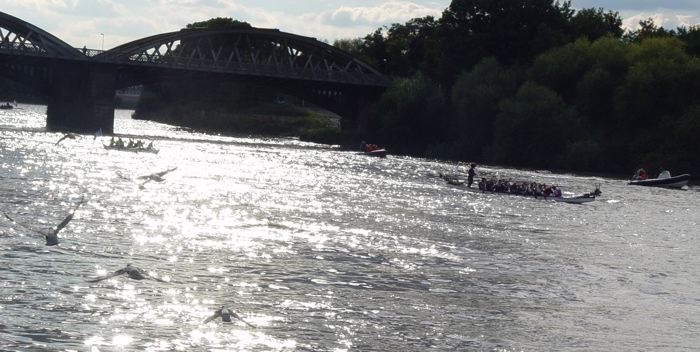


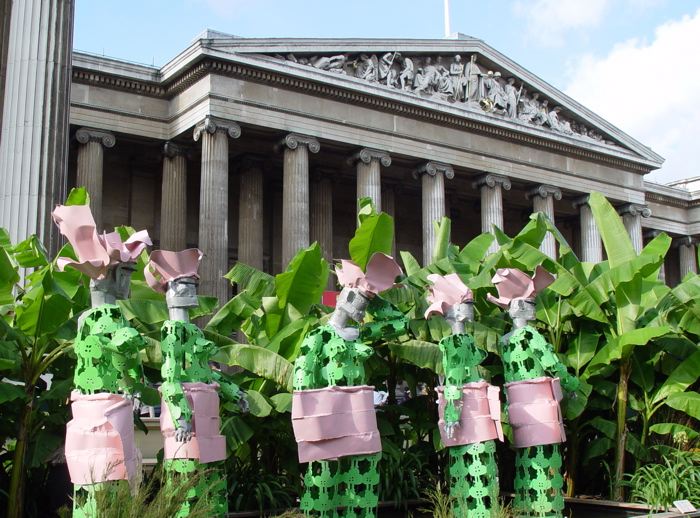
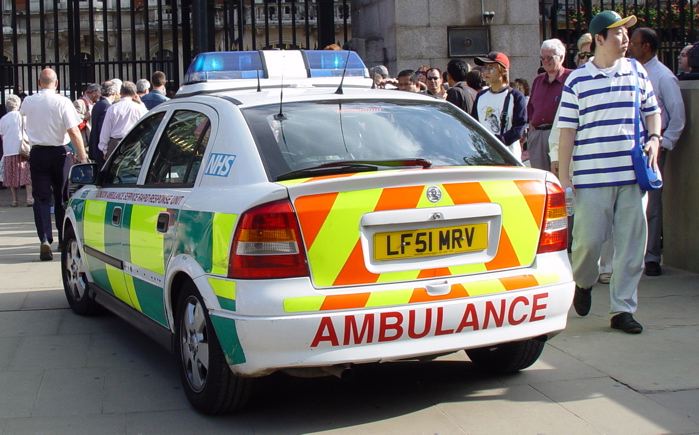
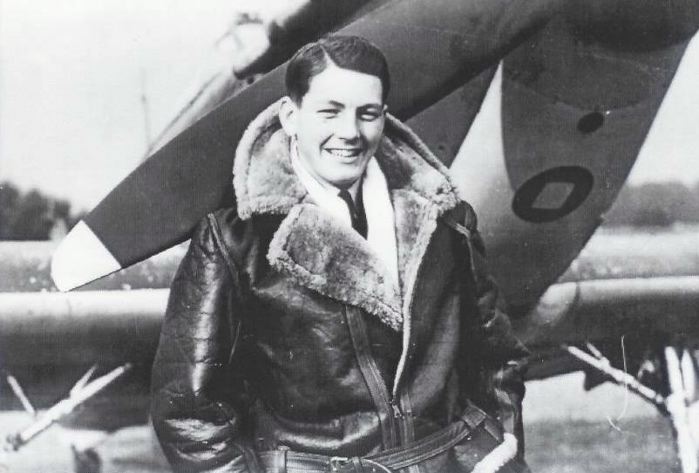


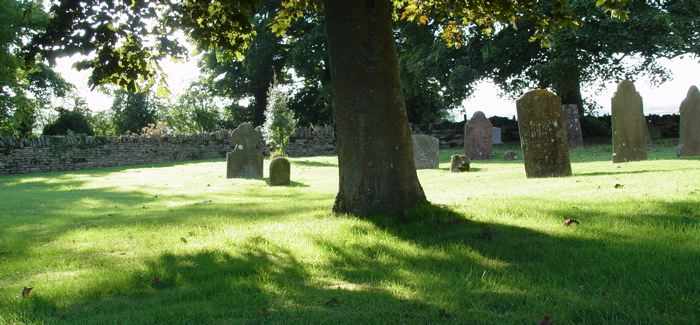
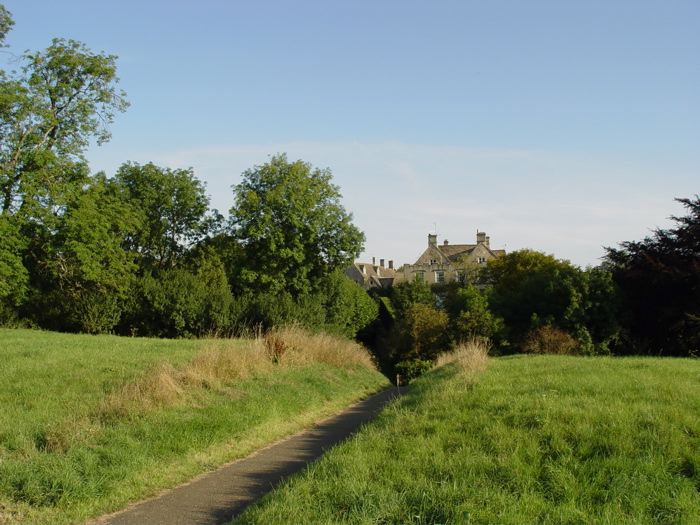
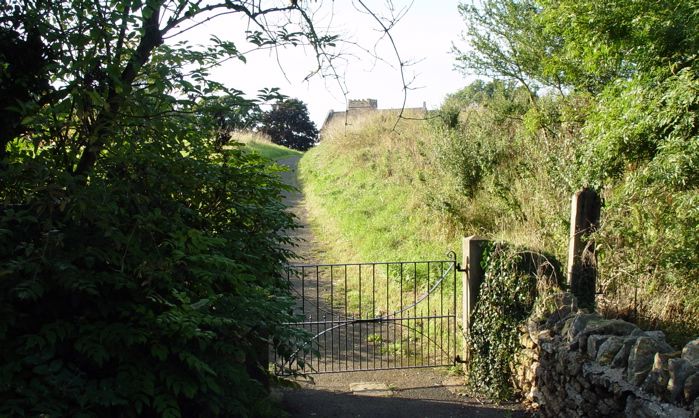
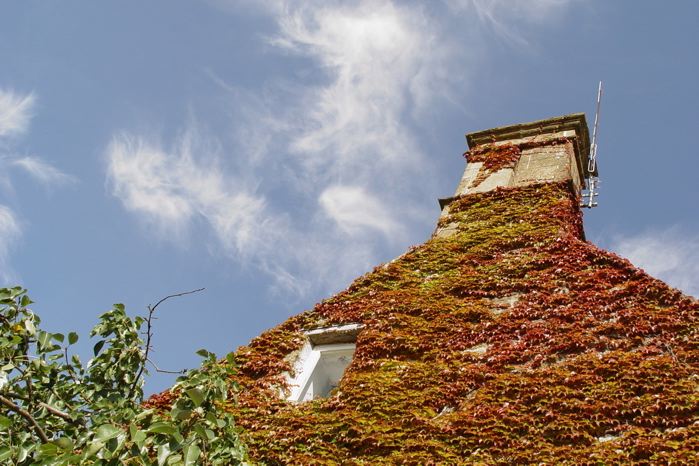
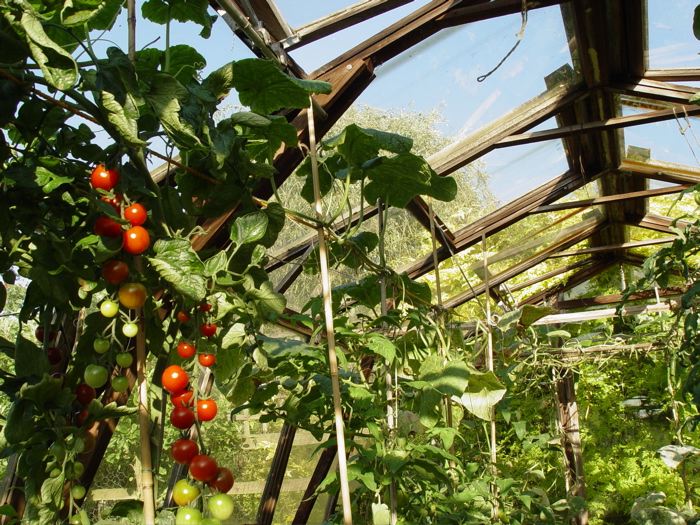
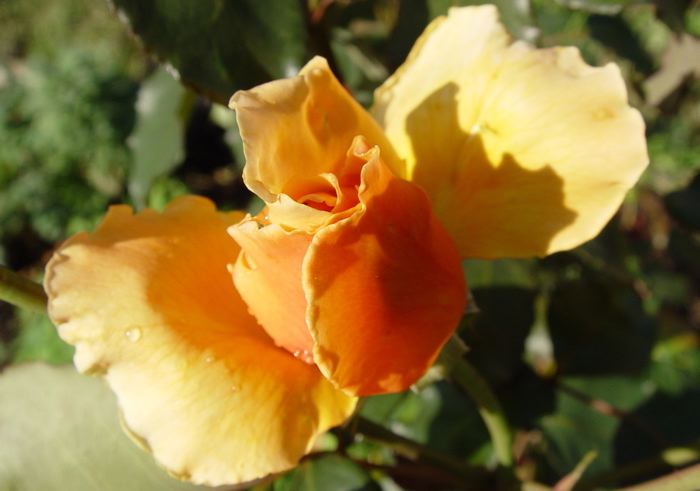
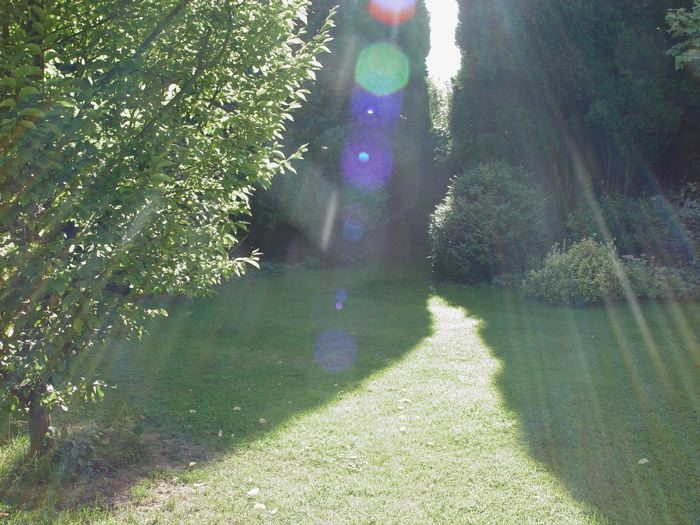
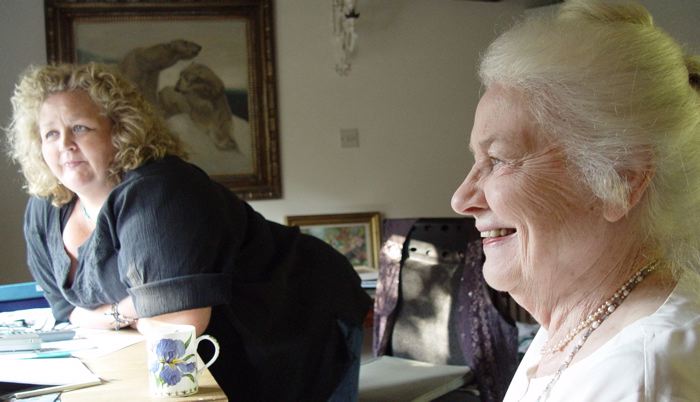
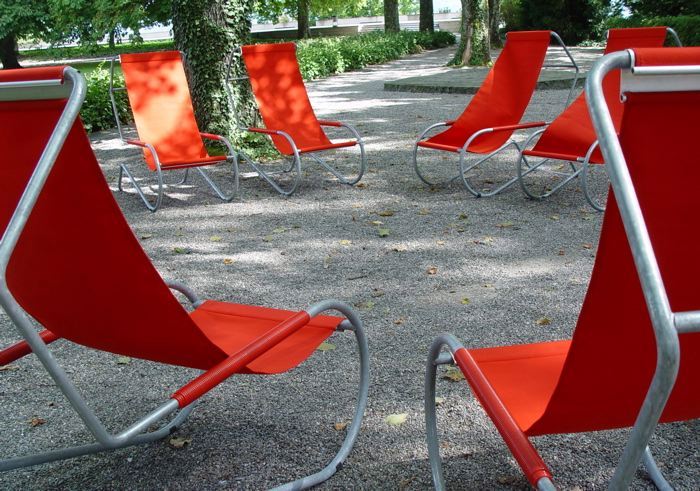
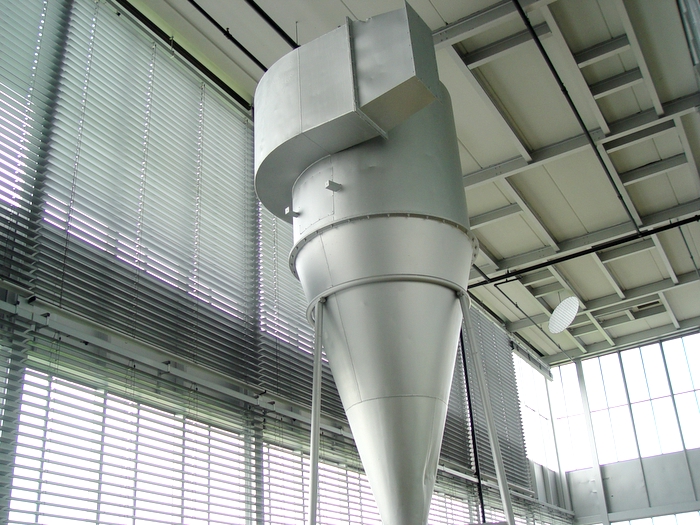
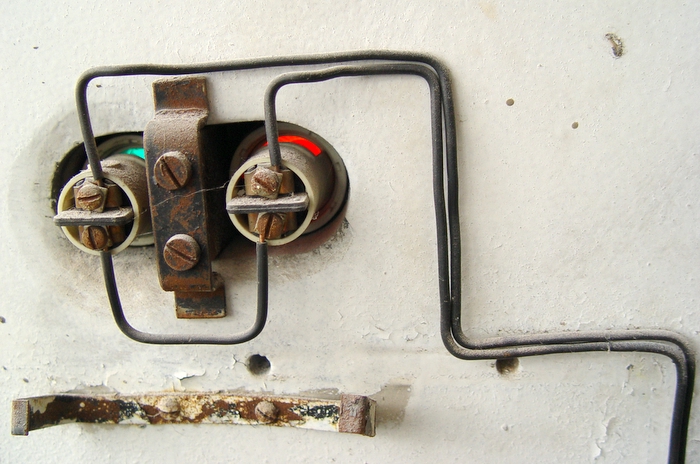
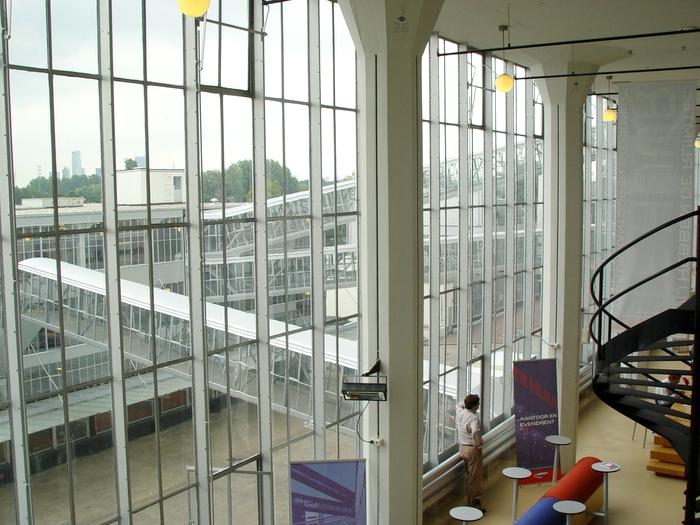
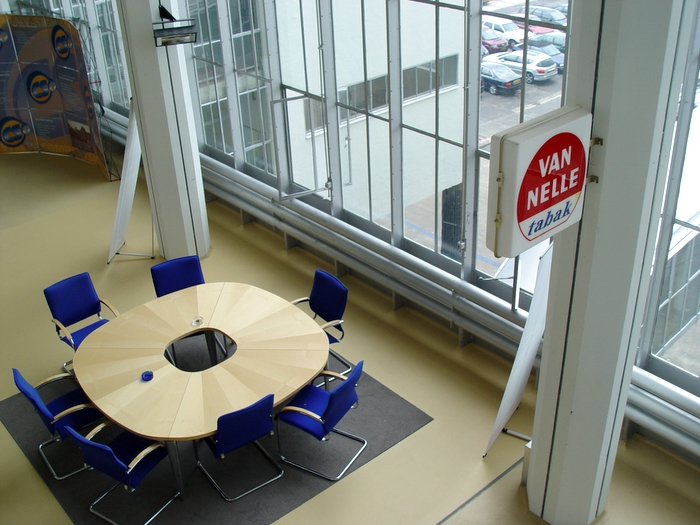
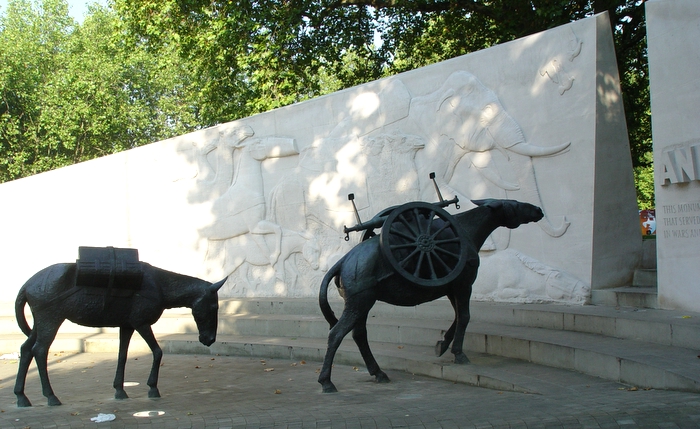
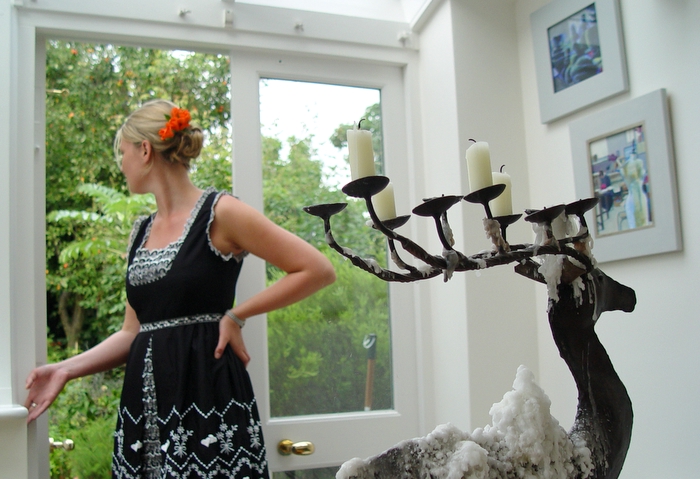
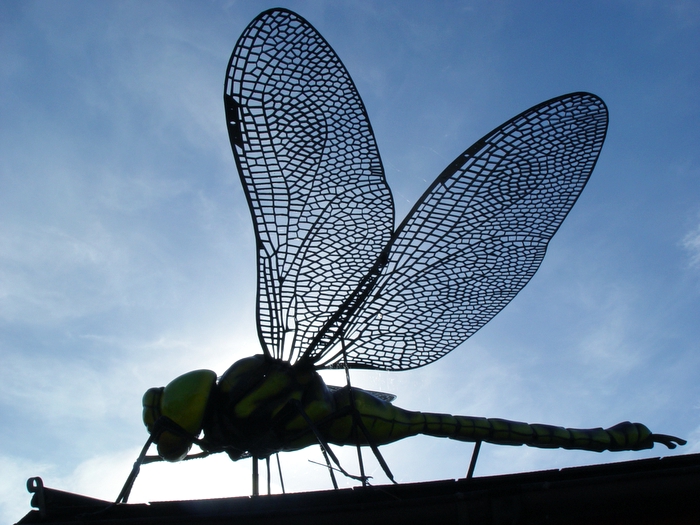

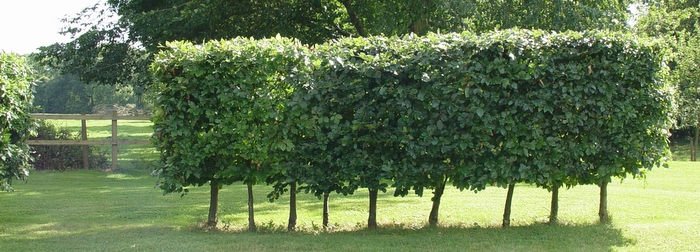
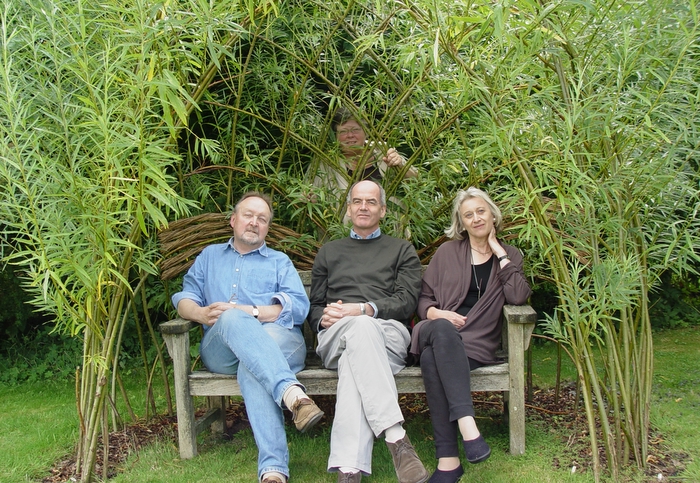
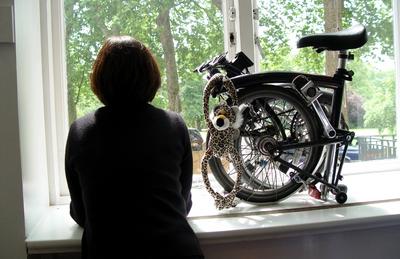

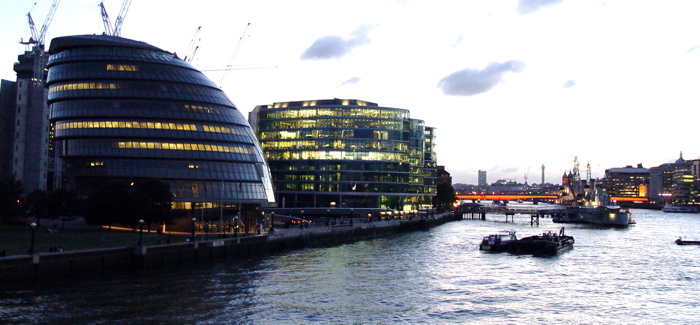 Looking west, towards HMS Belfast
Looking west, towards HMS Belfast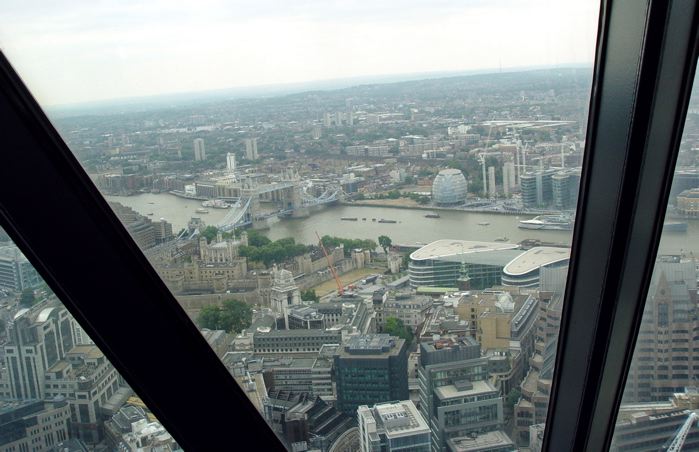
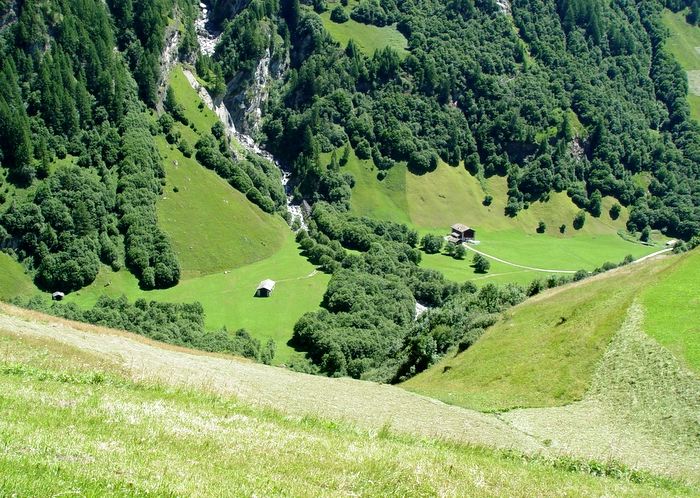
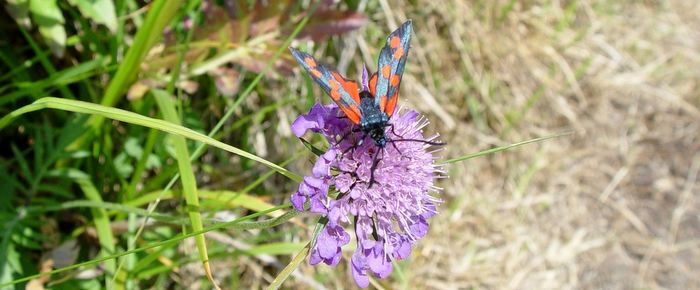 A Six-spot Burnet, says Sir Geoffrey Chandler
A Six-spot Burnet, says Sir Geoffrey Chandler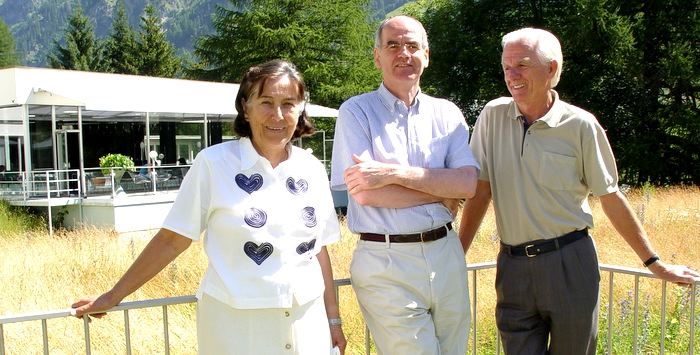
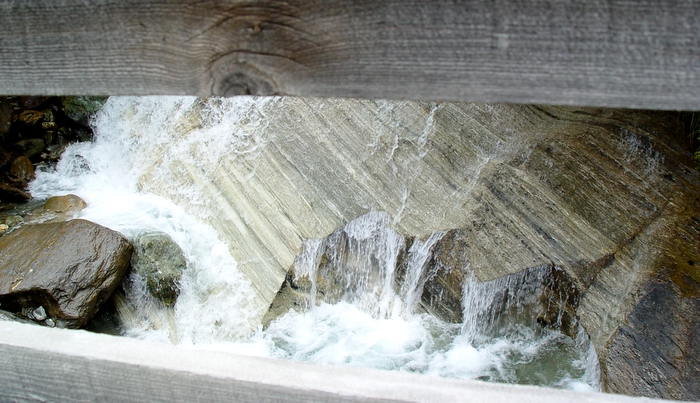
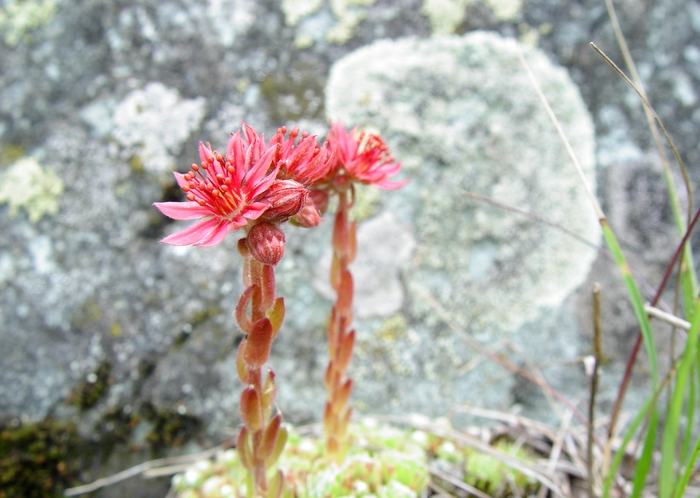
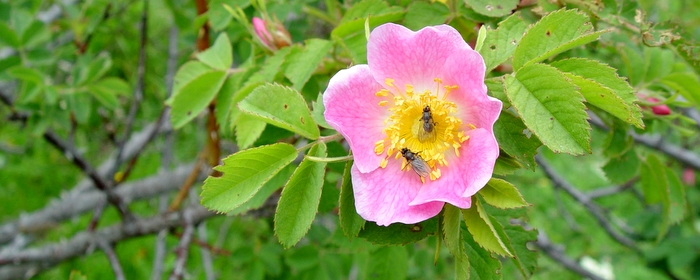
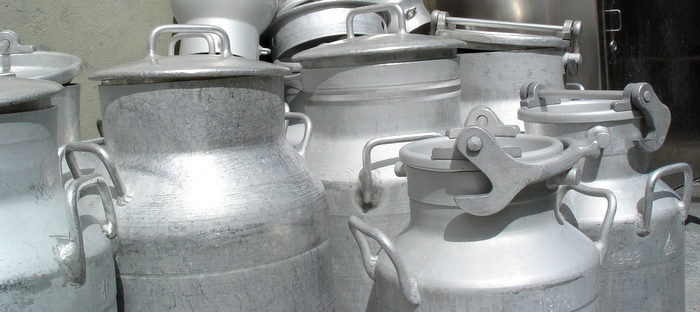
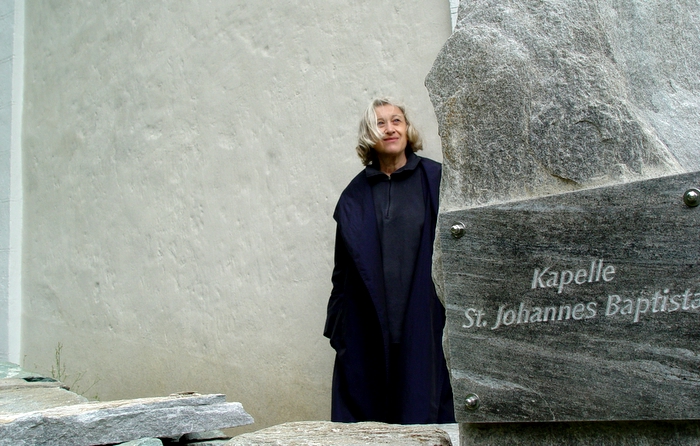 Elaine and chapel
Elaine and chapel Therme 1
Therme 1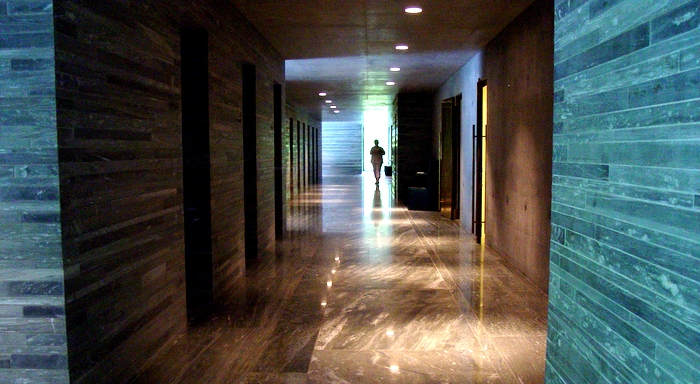 Therme 2
Therme 2
